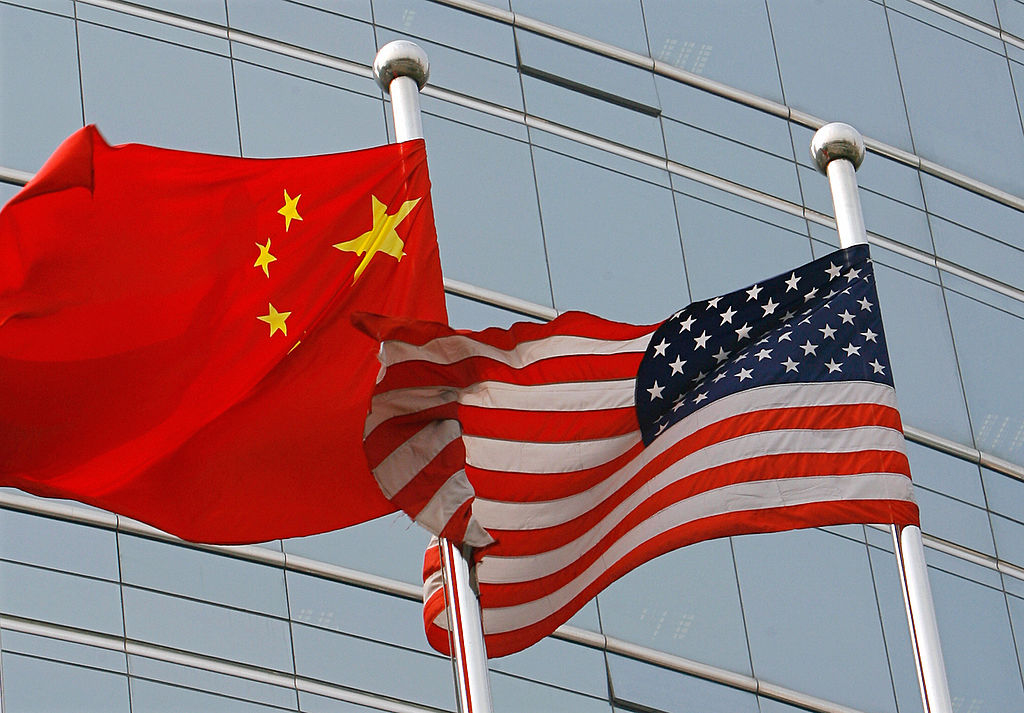
As tensions between China and the U.S. have grown in recent months, I’ve been pondering the durability of the superpowers’ long-standing engagement on climate change. In an interview in April with John Kerry—a few weeks after Russia invaded Ukraine—I asked the United States’ top climate diplomat if Washington and Beijing could continue to work together on climate change if China supported the Kremlin’s war.
His answer didn’t provide a lot of reassurance. “We’ve had a couple of Zoom meetings and we’re really trying to find out just how connected the issues will be,” he said. On Aug. 5, that cooperation fell apart when Beijing announced it would suspend climate talks with the U.S. in response to House Speaker Nancy Pelosi’s visit to Taiwan—which China regards as a renegade province.
A lack of dialogue between the world’s two largest emitters is worrying, and the politicization of the climate agenda is a dangerous new road. A rift may make the U.S. clean energy transition more difficult, given its dependence on China’s technology exports; it may also hurt global efforts to stop climate change.
Read More: The Inflation Reduction Act Is About to Jumpstart U.S. Climate Policy and Change the World
More from TIME
Together, the countries have made important progress, including securing global cooperation for the 2015 Paris Agreement. And last year, the nations announced at the COP26 summit that they would join forces to curb methane emissions. In September 2021, Chinese President Xi Jinping said that the county will stop financing overseas coal projects, a pledge that some experts say wouldn’t have happened without international engagement. “I don’t necessarily think that this commitment would have been made by China voluntarily without any international engagement, including U.S. engagement,” says Li Shuo, of Greenpeace East Asia, in Beijing.
“When we talk about the U.S.-China climate engagement over the last decade it’s pretty much a single storyline of cooperation and engagement,” says Li. “If we’re going to introduce more confrontation, competition, or even just disengagement, I don’t think that’s conducive to moving the global climate agenda forward.”
A version of this story first appeared in the Climate is Everything newsletter. To sign up, click here.
That doesn’t mean either country will stop doing its domestic homework. China’s coal production hit record levels in 2021, but Beijing has pledged to peak its emissions before 2030 and to reach carbon neutrality by 2060. China is adding more renewable energy capacity than any other country, and it’s a leader in key green technologies such as electric vehicles and batteries. That’s unlikely to change as Beijing continues to strive for energy security and economic growth—and contends with a public that’s increasingly concerned with environmental issues. Qin Gang, the Chinese Ambassador to the U.S., said on Twitter on Aug. 9 that China will stay committed to its climate goals.
In the U.S., the Inflation Reduction Act aims to bolster domestic renewable energy technology manufacturing. But that won’t happen overnight. In the meantime, the U.S. remains dependent on China for things like solar components. “China controls most of the world’s solar hardware capacity, the largest EV market, the bulk of the world’s battery production, most of its rare earths production, and some of the few wind turbine companies (onshore and offshore) making profits these days, it’s just hard to see how China cutting cooperation on climate change with the U.S. hurts China,” says Norman Waite, a Hong Kong-based energy finance analyst for the Institute for Energy Economics and Financial Analysis.
Read More: The U.S. and China Need to Put Aside Their Rivalry and Focus on the Common Enemy: Climate Change
But now, more than ever, cooperation between nations matters, says Joanna Lewis, director of the Science, Technology and International Affairs program at Georgetown University: “While the U.S. and other countries have announced plans to scale up clean energy manufacturing, realistically this will take many years, and we are running out of time to decarbonize our energy sectors.”
If tensions continue to rise, it could make the energy transition an even bumpier ride. Even before Pelosi’s stopover in Taiwan, the U.S.’s increasingly tough stance on China has caused supply chain disruptions, and some in the industry have argued that tariffs hurt U.S. companies and consumers. In February, U.S. President Joe Biden extended Trump-era tariffs—aimed to help domestic manufacturers—on some Chinese solar products. And in recent weeks, some Chinese solar panel suppliers have had shipments to the U.S. detained or sent back by U.S. customs agents trying to enforce a law that blocks most imports from China’s Xinjiang region over concerns about forced labor, according to the Wall Street Journal.
Though human rights issues should not be ignored, the U.S. and China will need to work together on climate change for the world to remain liveable. As Michael Davidson, an assistant professor of engineering and policy at the University of California San Diego, says: “U.S.-China engagement on climate is sorely needed in areas of trade, supply chains, and technology, to ensure that bilateral tensions do not irreparably harm the ability to reduce emissions in either country and the world.”
More Must-Reads from TIME
- Cybersecurity Experts Are Sounding the Alarm on DOGE
- Meet the 2025 Women of the Year
- The Harsh Truth About Disability Inclusion
- Why Do More Young Adults Have Cancer?
- Colman Domingo Leads With Radical Love
- How to Get Better at Doing Things Alone
- Michelle Zauner Stares Down the Darkness
Write to Amy Gunia at amy.gunia@time.com